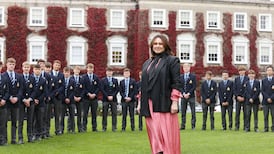Opinion polls will form a crucial part of the coming campaign. Jack Jones assesses their value
With the general election year now taking shape, and party leaders positioning themselves to take advantage of the options, speculation as to the outcome is growing by the day.
Currently commentators are looking to three sources for inspiration; the national opinion polls; the recent series of TG4/MRBI constituency opinion polls; and the post-1997 by-elections.
More about these later, since in my opinion there are two other factors which are likely to play a more influential role on polling day.
The first will be the circumstances in which the election is called, and history has shown how crucial this aspect can be. We need look no further than to two of Mr Ahern's predecessors, Mr Haughey in 1989 and Mr Reynolds in 1992.
In each instance the electorate at large, including Fianna Fáil supporters, did not agree that an election was necessary, with the result that although each was re-elected Taoiseach, Fianna Fáil lost four seats in 1989 and nine in 1992.
To date, having taken his coalition Government to what is virtually its full statutory term, Bertie Ahern has positioned himself advantageously.
The only unknowns at the moment are possible pitfalls within the next four months; the primary one being the timing and outcome of the abortion referendum.
In another context, Bertie Ahern will also be seen to have delivered. Before 1989 coalition was not in the Fianna Fáil vocabulary, and although both Mr Haughey and Mr Reynolds lived with the concept, neither was comfortable with it.
In contrast to 1989 and 1992, the present two Government parties are emerging well from the coalition experience, and it appears most parties would now be happy to consider coalition with Mr Ahern's Fianna Fáil.
While a lot still depends on the next four months, the Taoiseach is currently well positioned.
The second factor, which is entirely factual, relates to the trends over the seven general elections since 1981, when the present 166-seat Dáil was established.
Over this period (although the electorate has increased by nearly 500,000), the Fianna Fáil share of the first-preference vote has dropped by 6 per cent, and Fine Gael by 9 per cent, and while the Labour Party has held its share at 10 per cent, the "others" category has increased from 8 per cent to 22 per cent.
The figures also show that, while the two large parties have lost ground over the 16-year period, Fine Gael support has not moved out of the 20s since the establishment of the Progressive Democrats in December 1985.
Fianna Fáil on the other hand recovered quickly from the PD impact, and its support has been stable from 1981 up to and including the 1989 election.
Since then, in the 1992 and 1997 elections, the Fianna Fáil vote has dropped to 39 per cent. Should this trend continue, the indications are that the first-preference cake will again be divided to a very considerable extent with, as I first indicated in 1992, the European "coalition" norm now becoming conventional here.
Incidentally, although Mr Ahern as Taoiseach has quite consistently enjoyed high ratings and has on a number of occasions succeeded in distancing himself from low Government figures, it is untrue to claim - as at least two commentators have done recently - that if he is re-elected Taoiseach, it would be the first occasion in 30 years that this would have happened.
Both Charles Haughey and Albert Reynolds were re-elected Taoiseach in 1989 and 1992 respectively. However, neither was re-elected along with the government he previously led.
The last occasion when this arose was when Jack Lynch led Fianna Fáil back into government in 1969.
In reverting to the first of the three factors mentioned at the outset, national opinion polls, the consistent overstatement of Fianna Fáil support and corresponding understatement of the combined support for other parties (due to the low election turnout and other associated issues), and the consequent need for adjustment of the poll figures, must be kept in mind.
A further point is that national polls represent an overall average for all parties, across all 42 constituencies, and when interpreting the figures it is necessary therefore to take account of the number of constituencies in which each party normally nominates candidates.
For Fianna Fáil and Fine Gael (and to some extent Labour), this means all 42, but in 1997 the PDs contested 27, and while the overall party average was 4.7 per cent, in the contested constituencies the figure was 7.3 per cent, which returned four seats.
In other words, the national average for small parties is not particularly relevant, and each should be viewed in a different context from the larger parties which contest all or most constituencies.
The primary reason the TG4/MRBI constituency polls show Fianna Fáil performing less well than in national polls is that a simulated ballot paper which contains the names of all candidates is used, and the party figures are calculated as a cumulation of the candidate figures.
In this regard, there is no evidence of the overstatement for Fianna Fail, and these polls are possibly closer to the real situation on the day.
However, as with national polls, they are not designed to, nor capable of predicting the election outcome until perhaps in the final stages of the election campaign.
Finally, my personal opinion is that by-elections do not reflect future behaviour in a general election.
Only one seat is at stake, and parties normally nominate only one candidate. All transfers therefore must come from outside the party, and this is in contrast to the situation in general elections.
Against this very varied background, the adjusted figures from the national opinion polls over the next four months will tell us all a lot more than those of the past four years have done.
Jack Jones is chairman of the Market Research Bureau of Ireland Ltd and author of the recently published In Your Opinion








